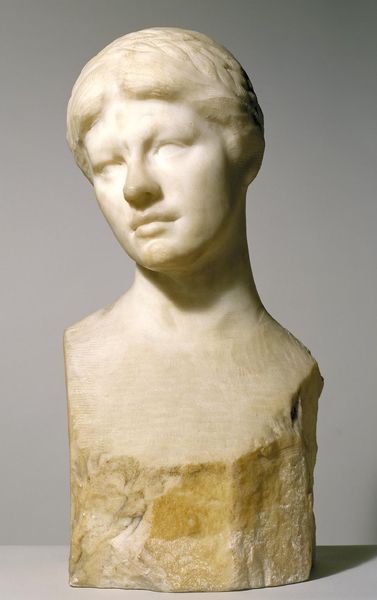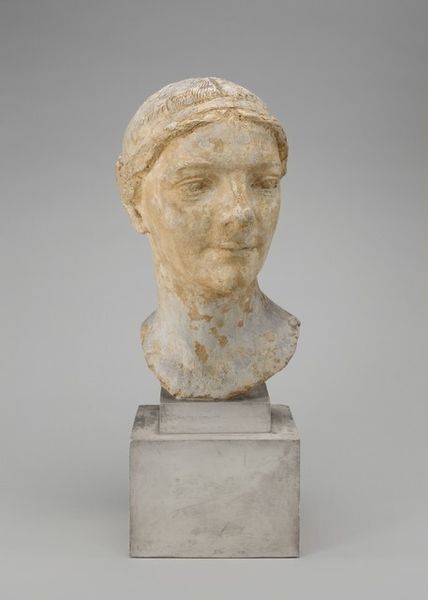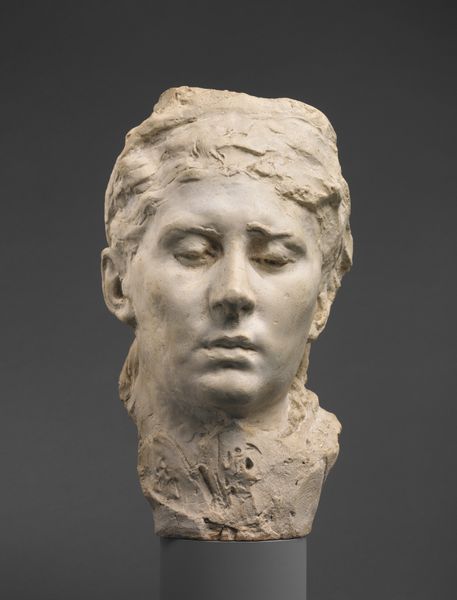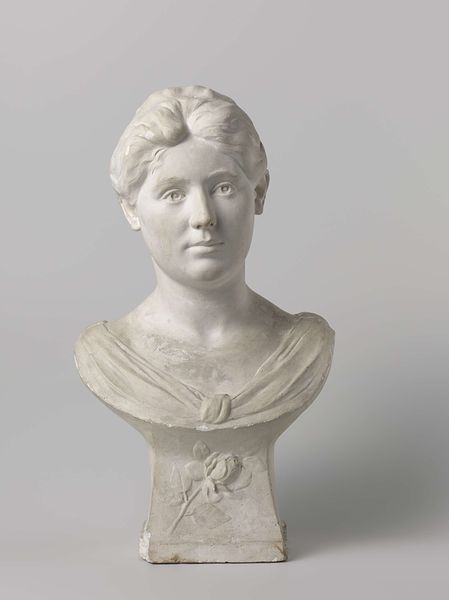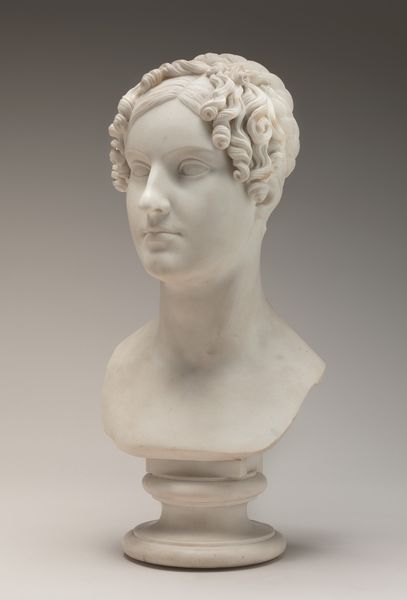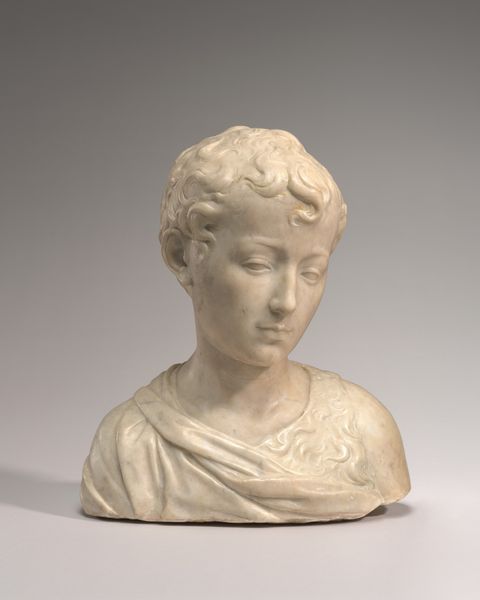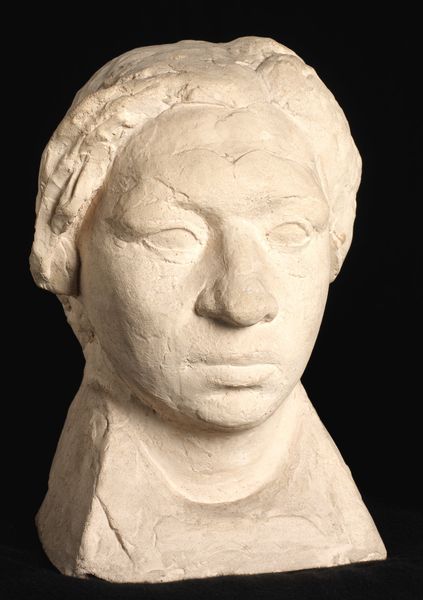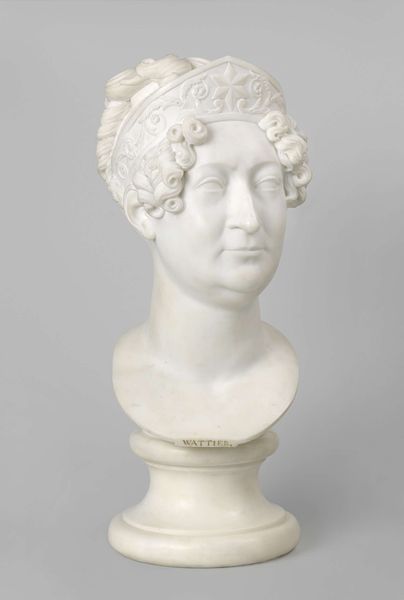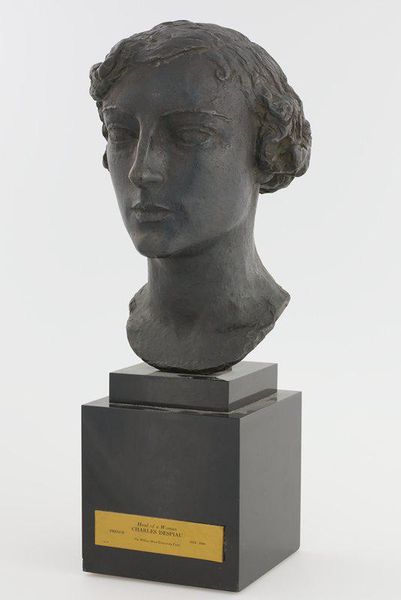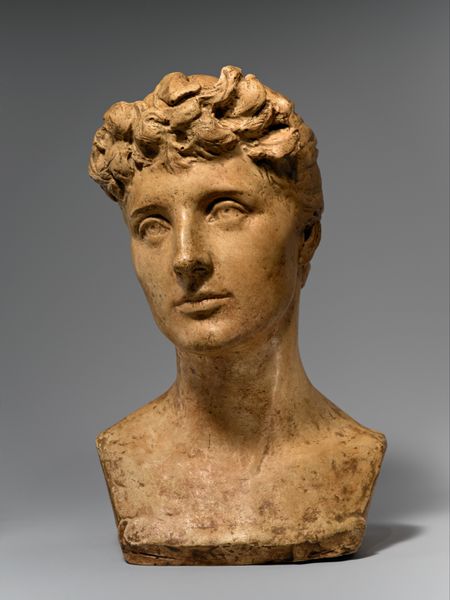
sculpture, marble
#
portrait
#
sculpture
#
figuration
#
form
#
sculpture
#
marble
#
italian-renaissance
#
early-renaissance
Dimensions: height 37 cm, width 21 cm, depth 26 cm, weight 17 kg
Copyright: Rijks Museum: Open Domain
Curator: Look at this quite remarkable sculpture by Antonio Rossellino, titled 'Head of a Young Woman,' believed to be from around 1425 to 1450. Editor: It's…arresting. The eyes being closed gives it such a serene, almost melancholic air. What about the material? The form is interesting, but is this marble? Curator: Yes, it is indeed marble, which lends it a certain coolness to the touch, I'd expect. I am fascinated by Rossellino's technique; his attention to form and structure within the composition is particularly skilled for this early period in the Renaissance. Editor: Marble. The expense and source tell their own story about labour. Given its origin during the Early Renaissance, were these portraits typically of elite women of their time? Or just symbolic? Curator: Precisely. Usually, commissions came from wealthy families, for remembrance, marriage, or sometimes just as symbols of their power and status. How the material shapes the narrative is fascinating, don't you think? The carving of this medium also demonstrates a material mastery that elevates this bust beyond a simple depiction. Editor: Indeed. Think about the cultural value imbued in such a portrait—a permanent display of family status, frozen in idealized form and carefully displayed or traded amongst elite family networks. Its composition allows its function. Curator: Right, and its survival offers an insight into workshop practices and the economics around artwork production at the time. Each mark tells part of the production narrative! What else do you think a viewer might feel when considering 'Head of a Young Woman?' Editor: The smoothed marble creates idealized features while communicating stillness, grace, and virtue. The overall effect, the composition, is a statement about idealized femininity but also its limitations, constrained within that medium. It embodies serenity. Curator: Interesting points! Looking at its construction and material brings history and humanity alive! It shows how things were crafted then. Editor: Yes, and hopefully sparks questions on who benefits when creating art—that history has consequences, down to this material choice.
Comments
No comments
Be the first to comment and join the conversation on the ultimate creative platform.
